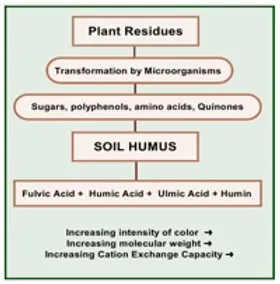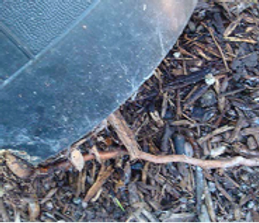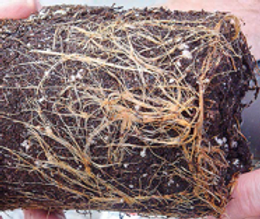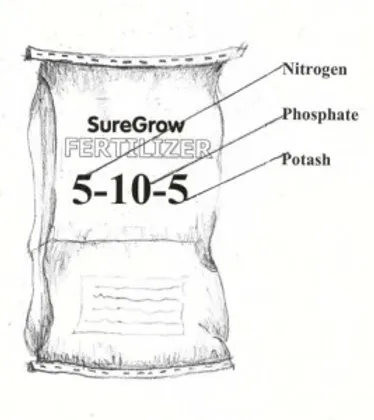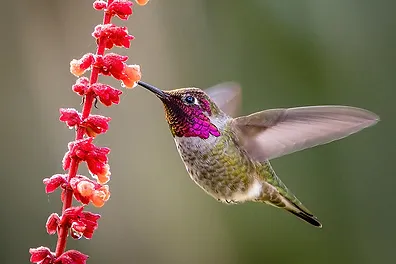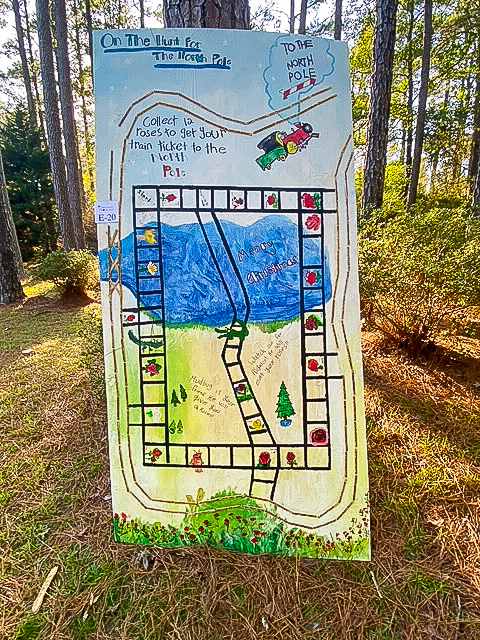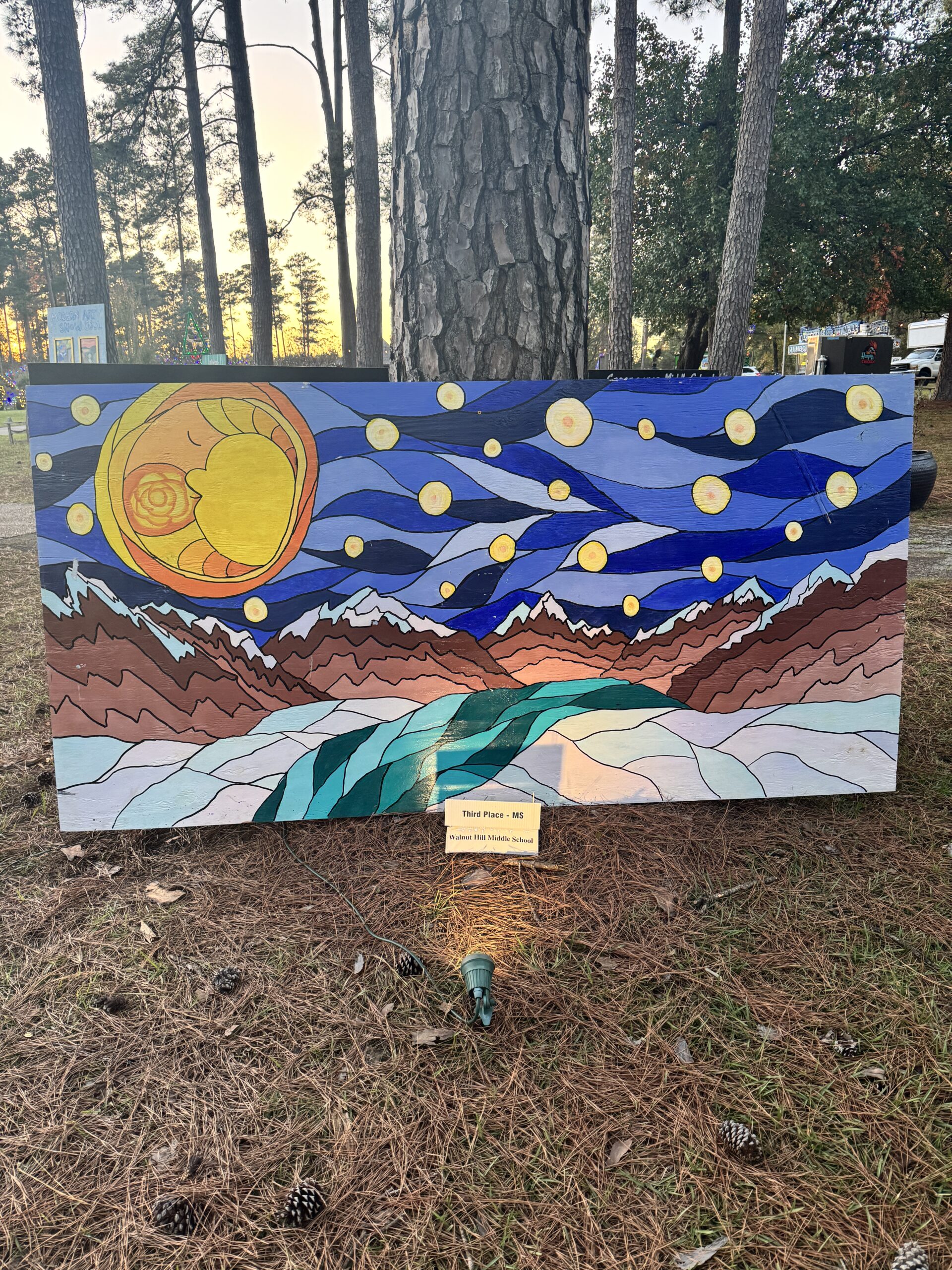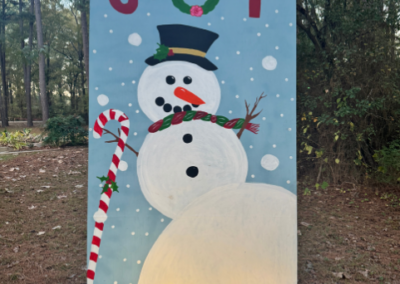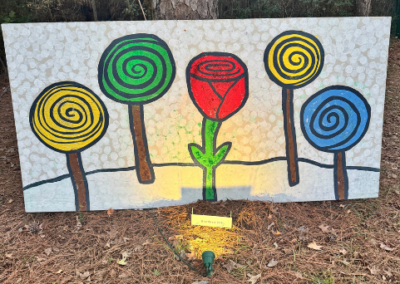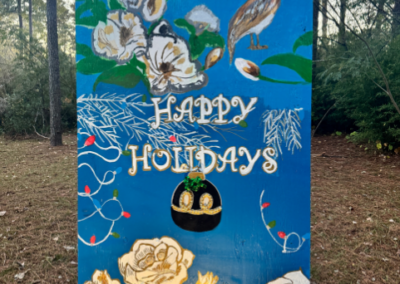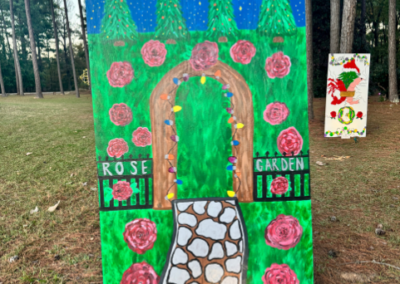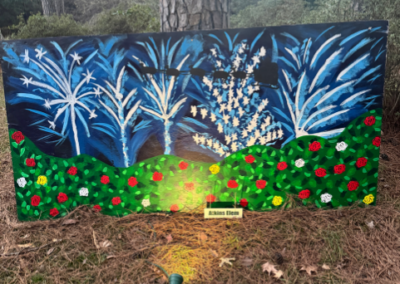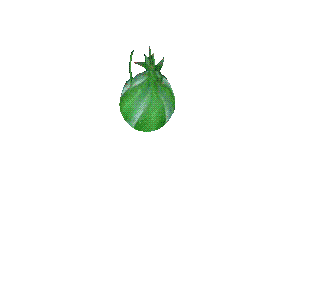by Julie A. Matlin, Master Rosarian, Butte Rose Society
This is a 2020 AOM winner
Ever heard of Pollen Beetles (Meligethes ssp.)? They love roses, daffodils, sweet peas, squash, broccoli, and the list goes on! These small black beetles, only about one-sixteenth of an inch long, are most active in the spring and mid-to-late summer when they can be found happily munching on pollen-rich roses, a definite favorite! The beetles usually stay buried deep inside the rose bloom even when cut, but actually cause very little bloom damage.
There is no control for these beetles because of the sheer numbers that make gardens their home. It is specifically recommended never to use any insecticides for control as insecticides not only cause bloom damage, but are highly toxic to all essential garden pollinators and beneficial insects.
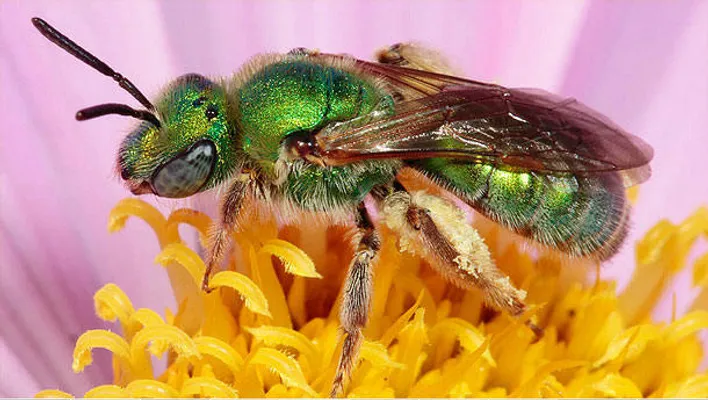
ABOVE & BELOW: Bee

Most insects in our rose gardens are not destructive pests. Many are not only useful to the rose, but essential for its survival. The majority are either harmless or beneficial and play a crucial role as pollinators to keep our roses healthy, thriving, and alive! The pollen beetle is responsible for the pollination of 88% of the 240,000 species of flowers across the globe!
Most rosarians probably think of the Monarch Butterfly and the European Honeybee as the most recognizable garden pollinators. Certainly, the honeybee is considered a rosarian’s “best friend”, but our bees and butterflies are disappearing at an alarming rate, and if some human practices are not changed, will prove cataclysmic for mankind! The European Honeybees (Apis mellifera) are crucial to agricultural production in California as pollinators of flowers, fruits, vegetables, and seed and forage crops like clover and alfalfa, and also as producers of honey and wax. Do you know that one-third of a person’s average diet depends on honeybee pollination? Do you also know that pollinators are responsible for 15 billion dollars per year towards California’s economy?
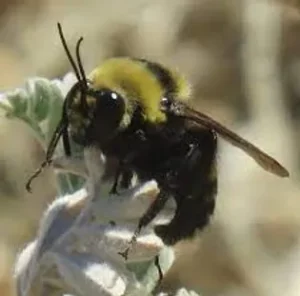
However, there are other less-known garden insects that, although not as recognizable or prolific as the honeybee or butterfly, do important work as pollinators in our rose, vegetable, and / or home orchards. There are some fascinating, beneficial pollinating members of the very diverse honeybee family. Honeybees belong to the order Hymenoptera. This large order includes not only bees, but also wasps, sawflies, and ants! Ground-nesting wasps and bees, such as bumblebees, carpenter bees, leaf-cutting bees, mud daubers, sand wasps, and paper wasps are all important pollinators in California crop and flower production, and important predators of harmful garden pests. Bring on the yellowjackets and paper wasps in spite of their sting!
Bumblebees, with their long tongues, are important pollinators of clover, sunflowers, and roses. Yellowjackets and Paper Wasps are not only pollinators but also beneficial insects in that they are predators of insect pests that damage trees, crops, flowers, and shrubs like roses, but also houseflies! Mining, or “Sweat Bees” as they are commonly called, and Leaf-Cutting Bees, both gather nectar and pollen from roses and other garden flowers and, in doing so, pollination occurs. Carpenter Bees are very similar to bumblebees in appearance. These interesting bees always build their nests in some sort of wood-like structure, and are important pollinators of crops, landscape plants, roses, and flowers. Unlike some of their other bee relatives, carpenter bees are stinger-less.
Unlike the carpenter bees that love wood, Mud Dauber Wasps build mud nests. I find these nests yearly, tucked behind hanging items in my kitchen. Adult mud daubers feed on honeydew secreted by aphids, pollen and nectar in flowers, and are excellent pollinators, although not as efficient as the hairy-bodied bees, as their bodies are sleek and smooth. Mud daubers are beneficial predators of spiders, like the black widow. They very rarely sting.
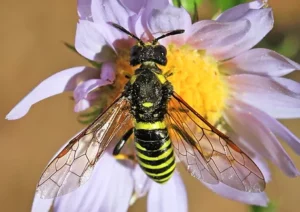
Adult Sawflies are important pollinators of crops and flowers, like roses, in California. Unfortunately, the female, when laying her eggs, uses her ovipositor to cut into the young, tender leaves and petioles of roses, and can do severe damage to rose shrubs. Because sawflies feed in groups, they can quickly defoliate plants. The immature or larval stage of the sawfly resembles little caterpillars, and like the adult, can also cause severe plant damage. In California, we have the Bristly Rose Slug, the European Rose Slug, and the Curled Rose Slug. Roses can be “tented” if adult sawflies are a problem, and it is recommended that the “caterpillars” be picked off rose shrubs, unless a major problem. Sawflies do not sting.
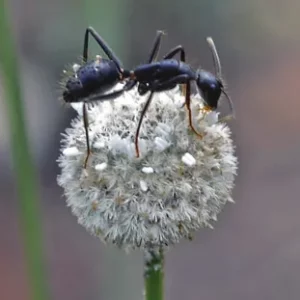
Ants, ants, ants! Most of the 270 species of ants found in California can be generally considered major household nuisances or pests, but they are part of a group of very social insects that are great lovers of nectar. Ants play an important role in our ecosystem, including pollination. They “harvest” plant-sucking aphids clustered on rose canes, stems, leaves, buds and blooms, secreting the sweet, sticky nectar that ants thrive on. As the ants practice “aphid husbandry”, pollination takes place. Ants are natural enemies to a number of insect pests, but have an especially close symbiotic relationship with rose-loving aphids. Aphid husbandry is usually viewed as detrimental because the aphid population can increase. However, aphid husbandry is beneficial because ants kill many plant-eating insects.
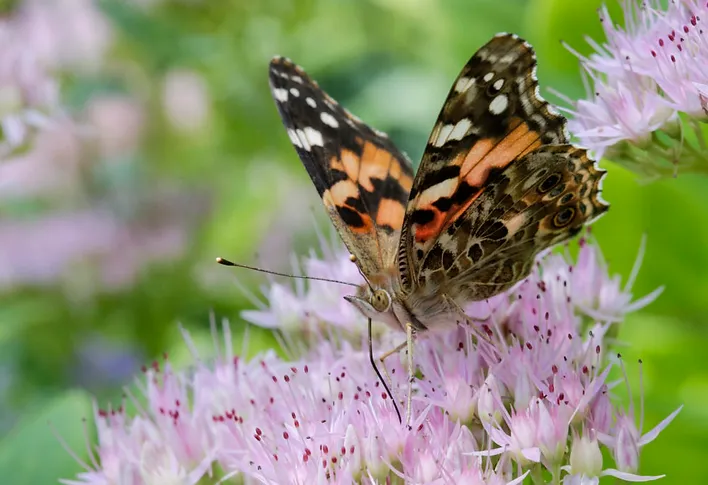
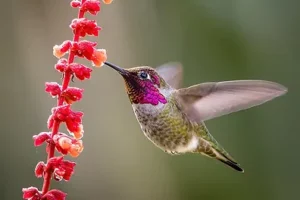
Most adult butterflies, like the Monarch Butterfly and Moths, belong to the order Lepidoptera, and are beneficial pollinators essential for healthy fruit and flower set. They feed on fluids such as nectar with their “sucking” tubes that form siphoning mouth parts. As they fly from plant to plant, pollination occurs! Butterflies are only second to honeybees in pollination, and need to be protected. Interestingly, in the bird population, Hummingbirds are the most important pollinators in California, followed by the honeybees and then, butterflies.
Syrphid Flies, a.k.a. “Flower” or “Hover Flies”, from the order Diptera, resemble honeybees or yellowjackets, but unlike them, can “hover” and race away if disturbed. Syrphid flies love aphids! The grub stage of the syrphid feeds on aphids, and the female syrphid will lay her eggs on plants with aphids so that newly hatched larvae have a ready food source. Adult syrphids feed on both nectar and pollen, and while they are visiting pollen-rich roses and flowers, pollination occurs. Syrphid flies can control up to 70% of an aphid infestation, and play an important role in garden health.
The order Coleoptera, to which Lady Beetles and Soldier Beetles belong, is the largest insect group of animals on Earth. More than 30% of all insects are beetles, which is amazing! The lady beetle, soldier beetle, rove beetle, and the soil-dwelling ground beetle – the natural enemy of soil-dwelling pests – are considered the most important, beneficial insects in this group.
Lady beetles, or lady bugs, as they are most popularly called, are among the most recognizable of beneficial rose garden insects. There are literally thousands of species, with the convergent lady beetle the one most gardeners know in the rose garden. Bring on the aphids! A female lady beetle won’t lay her eggs without aphids nearby! The larvae that resemble little black and orange alligators consume more aphids than the adults. Eggs are normally laid in cluster near their food source. As lady beetles feed, they move pollen around from rose to rose.
Soldier Beetles, noted for their colorful bi-colored, slender bodies of deep brown and orange, can be found happily munching on aphid-infested rose canes, leaves, buds, and blooms. As the soldier beetle feeds on aphids, it also feeds on pollen and nectar, and pollination occurs. Soldier beetle larvae are soil dwellers that feed on fly larvae, soft-bodied insects, soil-dwelling caterpillars, and grasshopper eggs. The larvae help maintain a natural, environmental balance in the garden that protects shrubs, like roses.
Lacewings, green, brown, and dusty, belong to the order Neuroptera. These soft, slender-bodied insects love aphids, but will also feed on spider mites and their eggs, mealybugs, and immature insects. As adult lacewings feed on nectar and pollen, plants like roses get pollinated. The dusty lacewing can be found devouring spider mites found on roses when major infestations occur. These three lacewing insects are the most important predators of natural enemies in this order.
Our California insect pollinators, whether well-known or not, are a part of a worldwide network of mostly beneficial, pollinating insects that help “our gardens grow”, in the words of “Mary, Mary – Quite Contrary!”, even though some of these insects are quite “contrary” for many gardeners!
We live in a world of amazing insect diversity, and when you’re swatting at that mosquito, gnat, fly, or midge, consider the parasitic species that are considered important, biological control agents, like the syrphid flies. Praying Mantises, beloved by most gardeners, don’t make a huge impact on rose garden pests simply because of their feeding habits and solitary nature, but, we wouldn’t be without them. Minute Pirate Bugs, Damsel Bugs, Assassin Bugs, Ambush Bugs, Predatory Stink Bugs, Predaceous Plant Bugs, Big-Eyed Bugs, and believe it or not, predatory thrips used to control greenhouse pests like aphids, spider mites, flower thrips, and some caterpillars, all play an important role in our gardens and our worldwide green environment – our “bio-diversity”. If you plant a variety of nectar producing plants that mingle with roses, you attract pollinators and beneficials. When you practice ‘IPM’ gardening methods and “invite” pollinators and beneficials to your rose garden, although you may not eliminate all the “bad guys”, you can keep their numbers so low, you won’t even know that they’re there. This is “sustainable gardening”, and if, as gardeners we don’t make some changes, we won’t have roses to garden and love.
Photos submitted by Julie Matlin, courtesy Google Images


